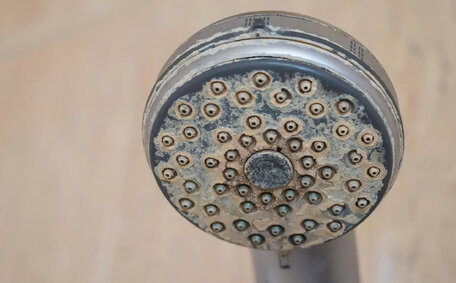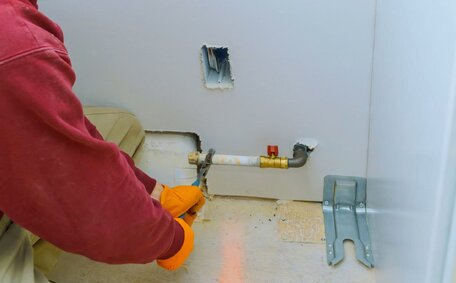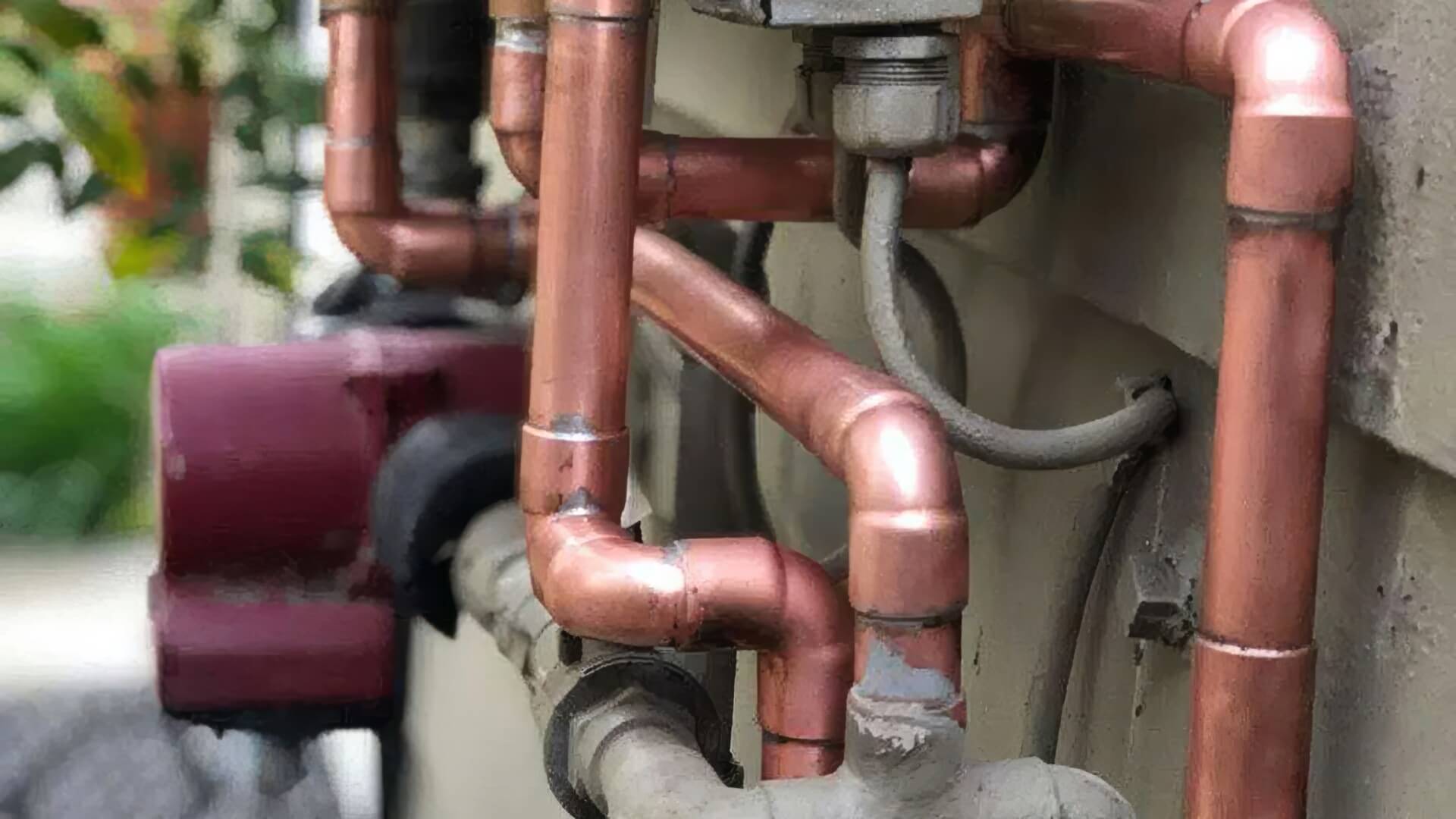Introduction to Hot Water Temperature Safety
Effective temperature control for hot water is crucial for your home, particularly when safeguarding children and the elderly in Drummoyne. Water that is too hot poses a significant scalding risk, especially for children and the elderly.
Finding the right balance is key. For optimal hot water safety, maintain systems near 50 degrees Celsius to control bacteria and prevent tap-related scalding. Temperatures higher than 60 degrees Celsius can cause third-degree burns in just seconds.
Conducting regular checks and adjustments to your water heater’s thermostat is necessary. This practice ensures peak performance and safety, particularly for older systems, and promotes energy efficiency even as components age. A licensed Sydney plumber can help adjust hot water temperature to ensure hot tap water is safe to use and also install mixing valves for added safety.
Dangers of Excessively High and Low Temperatures
Maintaining appropriate temperatures is crucial for hot water plumbing health safety and mitigating health risks. Excessively hot water above 60°C can cause severe, third-degree burns within seconds. Tap water reaching scalding hot temperatures can scald the skin, posing a high risk to vulnerable family members like children and the elderly.
Conversely, overly cool temperatures enable dangerous bacteria like Legionella to thrive. Legionnaire’s Disease, which can be severe, is a form of pneumonia caused by inhaling droplets containing Legionella bacteria from storage water systems. Storage tanks, pipework, taps, showers, and more can all harbour these bacteria when water temperatures are too low.
To achieve ideal temperatures, set your hot water system between 50-60°C. The NSW Health and Safety Executive recommends storing hot water at 60°C and distributing stored hot temperatures at above 50°C after tempering. Installing thermostatic mixing valves at taps ensures water is hot enough while allowing temperature control to ensure safety before use.
Checking and adjusting your hot water system’s thermostat will ensure you achieve your ideal hot water temperature for safety and efficiency. Consistent maintenance of your hot water unit will reduce temperature fluctuations over time.
Recommended Hot Water Temperature Settings
In line with Australian hot water guidelines, the recommended temperature setting for residential systems is 60°C at the storage tank or unit. This temperature can effectively kill harmful bacteria in your hot water tank while still enabling safe tempering down to around 50°C at taps.
This temperature provides thermal disinfection to control bacterial growth in storage hot environments. However, temperatures exceeding 50°C pose a significant scalding danger.
Higher storage temperatures above 75°C, which approach the maximum temperature capacity, are not recommended, as they compromise energy efficiency and increase pressure in systems. Excessively hot water not only leads to higher electricity bills but also means your water system can carry a significant risk of scalding without extra safety measures. Minimising piping heat loss, a crucial factor for efficiency, ensures safe storage at 60°C and suitable delivery temperatures.
Installing timers can enhance safety and ensure that water coming out of your new hot water system at home is energy efficient. Lowering water heater temperatures to 50°C during periods of low usage, such as overnight and weekends, can save energy. Just make sure your temperature is boosted back up to 60°C for several hours per day to replenish hot water supplies and sustain thermal disinfection.
Adjusting Your Hot Water System’s Thermostat
By adjusting your water system’s thermostat, you can optimise both safety and efficiency when setting the hot water temperature. Follow these steps:
- Locate the thermostat on your electric storage tank or flow water heater system to ensure your hot water is at the correct temperature. It may be behind an access panel.
- Check the current temperature set on your thermostat. Setting your hot water heater’s set point around 60°C is ideal for residential systems.
- Carefully turn the dial with a screwdriver to adjust the heater temperature to your preferred setting. Turn the dial clockwise to increase the temperature or counterclockwise to cool it down, if needed. If you raise the temperature above 50°C, install a tempering valve for safe temperature adjustment.
- After thermostat adjustments, let the water stabilise in temperature for several hours throughout the system, and run the tap briefly before use.
- Employ an industrial thermometer to verify the temperatures of hot water pipes before use, particularly after increasing the setting.
- Retain a 50°C thermostat setting during low usage times like overnight and weekends to conserve energy, and enhance it to 60°C during peak times.
- Consider installing timers to automatically adjust temperatures twice daily for optimal efficiency.
Adjusting your heater on the thermostat to the right temperature ensures your home enjoys safe and efficient hot water operation. At this temperature, water can maintain thermal disinfection while ensuring safe tap outlets for your household. Always make sure your interaction with very hot water is cautious.
Installing and Maintaining Safety Valves
Safety valves play a crucial role in managing both safety and pressure in hot water systems, preventing dangerous buildups. Every storage tank and hot water supply line should be equipped with a temperature and pressure relief valve (TPRV). This safety mechanism automatically releases excess heat and pressure to protect against potential accidents, crucial for households with children elderly care.
Place TPR valves atop the hot water unit for easy access.
Gently lift the lever, perform temperature checks with the bathroom door closed to avoid draft interference, and confirm the release of a small amount of water before resealing the valve.
If the temperature and pressure relief (TPR) valve can fail to open or closes too slowly, it must be replaced by a licenced plumber immediately. Malfunctioning TPR valves can lead to tank explosions and severe scalding injuries. Only a qualified professional should install, test or replace these valves.
As part of routine maintenance, visually check for any leaks around TPR valves. Look for corrosion, damage, or water stains that may indicate previous issues or failures that require replacement.
Routine Maintenance for Efficiency and Lifespan
Routine maintenance is critical for optimal efficiency, ensuring high-quality water and enhancing the system’s longevity. Routine checks and simple tasks are essential for maintaining system efficiency, addressing problems early, and extending the life of components.
Every six months, check that:
- Your valves are working properly, including relief valves.
- The sacrificial anode rod is intact and hasn’t eroded substantially yet. Replace it if required.
- Insulation blankets or wraps are still securely installed.
- All electrical connections associated with your tank are clean and tight.
- The hot water tank or heating elements have accumulated sediment and require draining.
Enhancing water circulation can further improve your hot water system’s efficiency. Install recirculating pumps and insulate exposed pipes to manage temperatures during circulation. Annually flushing your system to clear sediment will enhance heat transfer and prevent conduction issues.
Replacing parts as required, whether in gas or electric hot water systems, extends the usable life of your hot water system, including tankless water heaters. These regular maintenance steps optimise safety and prevent more serious issues arising from wear and component failures down the track.
When to Call a Professional Plumber
Complex repairs or installations of hot water systems should be conducted by a professional licensed plumber. Attempting extensive hot water system maintenance yourself without training could result in leaks, bursts, or component damage down the track.
Specifically, you should contact a qualified plumber for tasks like:
- Installing or replacing your hot water heaters
- Backflow prevention device testing and installation
- Thermostatic mixing valve installation
- Full hot water system flush and replacements
- Gas water heater line repairs and installation
- Solar hot water system maintenance
- Repairing burst pipes, leaks or serious faults
For expert gas hot water system servicing in Drummoyne and nearby areas, reach out to Drummoyne Plumbing’s 24/7 team at 1300 349 338 or jobs@drummoyneplumbingservices.com.au.






